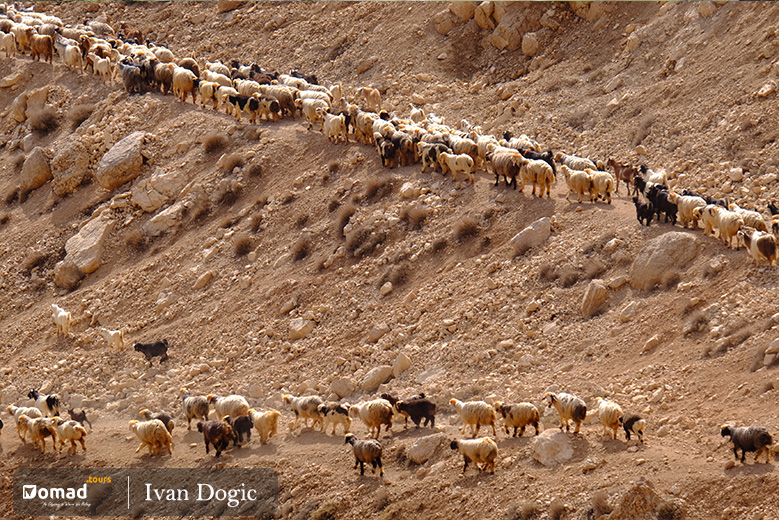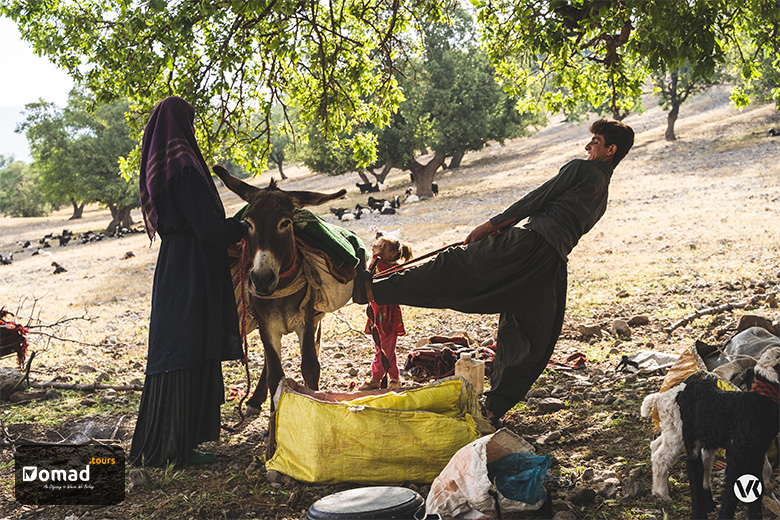The main characteristic of Iranian nomadism is the share of the land between summer pastures (“Garmsir”, hot place) and winter pastures (“Yeylag” cold place) land.
The principle movement (“Kuch” or “bâr” = Transhumance) between these places is done in spring and autumn. During this migration period, they will Cross the Zarde-Kuh massive, in Zagros Mountains, from one side to the other. The length of this route depends on the fraction of the tribe but it can reach to 300Km.
Why Spring Migration is Longer?
In spring, the nomads migrate to “yêylag”, in westerns side of Zagros. In spring migration, the climate and vegetation conditions are much more favorable (Especially for the herd). In consequence, the nomads spend a longer time completing this migration, from 15 to 45 days depending on the case.

However, the migration will be shorter in autumn when the nomads will go down to “garmsir” lands. In this case the duration of the migration is from 8 to 30 days. Sometimes, the watering places are dry in this time. If this happens, the nomads are obliged to join the next stage before the night, changing the itinerary or raising the pace.

Routes in Migration Time
This migration process, unlike other nomads from other places in the world, follows fix routes and drives the nomads to the same place every year where they will establish a fix camp for the following six months (“mâl”).
These routes are well-known because of their difficulty. This can be seen in the film Grass. A nation’s battle for live (1925) by Merian C. Cooper and Ernest B. Schoedsack. The nomads have to cross snowy passes of 3000m high altitude and face steep and complicate paths, slippery by the erosion created by the countless passages. In spring, they have to cross the dangerous rivers full of water due to the melt of snow. These conditions cause numerous accidents for both livestock and humans.
What Happens in Kuch Time?
The stages are always short to leave the herd the time for feeding. In fact, they rarely overcome the 10 kilometers in a day. The herd leaves the place first, with the first sun rays. Then, the women and some of the men will leave after packing all the belongings in the mules. They will go to the next stopping point to install the next camp.

Why is Kuch Necessary?
Despite the difficulties and risks the nomadic cycle is completely necessary since the “Yêylag” are covered in snow during winter time and temperatures are too high during summer in “Garmsir”. Making grazing impossible after some months of intensive use.
For this reason, the Bakhtiari nomads wait every migration with eagerness and they live it with joy and in a festival atmosphere. It represents a transition for better days and new life conditions. A break in routine where they have the chance to gain sociability and have unusual visits.
